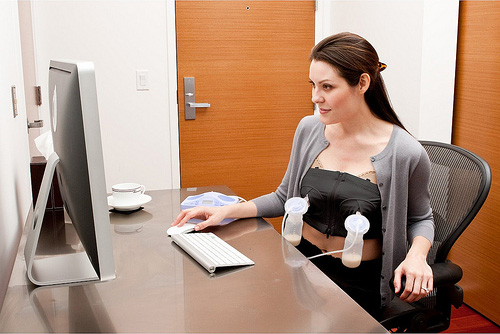Breast pumping at work can be a challenging and sometimes stressful experience for breastfeeding mothers. Whether you’re returning to work after maternity leave or are breastfeeding and working from home, finding the time and space to pump can be a challenge. However, with the right strategies and support, it is possible to successfully breast pump at work and maintain your milk supply. Here are 10 tips for breast pumping at work:
- Plan ahead. If you’re returning to work after maternity leave, it’s important to start preparing for breast pumping as early as possible. This may involve purchasing a breast pump, finding a private space to pump, and discussing your pumping needs with your employer. You may also want to consider stocking up on pumping supplies, such as breast milk storage bags and bottles, to make the process easier.
- Choose the right breast pump. There are many different types of breast pumps on the market, and it’s important to choose one that is comfortable, efficient, and easy to use. Consider factors such as the strength of the suction, the size and weight of the pump, and the type of suction (manual or electric). You may also want to consider purchasing a hands-free pumping bra to help free up your hands while pumping.
- Find a private, clean space to pump. Federal law requires employers to provide a private space (other than a bathroom) for breastfeeding employees to pump. This space should be clean, quiet, and free from interruptions. If your employer does not provide a suitable space, you may need to advocate for yourself and request a private space that meets your needs.
- Schedule pumping breaks. It’s important to schedule regular pumping breaks throughout the day to maintain your milk supply. Aim to pump every 2-3 hours, or as often as your baby nurses. You may need to adjust your pumping schedule based on your individual needs and the demands of your job.
- Store breast milk properly. Proper storage and handling of breast milk is crucial to ensure that it stays fresh and safe for your baby. Be sure to store expressed milk in a clean, airtight container, and label it with the date and time it was pumped. Breast milk can be stored in the refrigerator for up to 5 days, or in the freezer for up to 12 months.
- Keep pumping supplies on hand. It’s a good idea to keep pumping supplies with you at all times, in case you need to pump unexpectedly. This may include breast milk storage bags, bottles, and a cooler with ice packs to store your milk until you can get it home. You may also want to keep a spare set of pumping parts on hand in case you need to replace any damaged or lost items.
- Stay hydrated and well-nourished. Breastfeeding mothers need to stay hydrated and well-nourished to maintain their milk supply. Make sure to drink plenty of fluids, including water and lactation teas, and eat a healthy, well-balanced diet that includes plenty of fruits, vegetables, whole grains, and protein. Avoid caffeine and alcohol, as these can interfere with milk production.
- Find support and encouragement. Breast pumping at work can be a lonely and isolating experience, especially if you’re the only breastfeeding mother in your workplace. Consider finding a support group or online community of other breastfeeding mothers who can offer advice and encouragement. You may also want to consider speaking with a lactation consultant or other healthcare professional for personalized support and guidance.
- Consider using a lactation aid. Lactation aids, such as breast shells or lactation massagers, can help to increase milk flow and make the pumping process more comfortable. These products can be especially helpful if you’re experiencing low milk supply or have issues with milk flow. You may want to speak with a lactation consultant or other healthcare professional to see if a lactation aid could be right for you
- Stay organized and plan ahead. Breast pumping at work can be a time-consuming process, so it’s important to remember to be on a schedule.
Remember, breast pumping at work is a personal experience and what works for one mother may not work for another. The most important thing is to find strategies and support that work for you and your individual needs. Don’t be afraid to advocate for yourself and ask for help if you need it. With the right strategies and support, you can successfully breast pump at work and maintain your milk supply.




